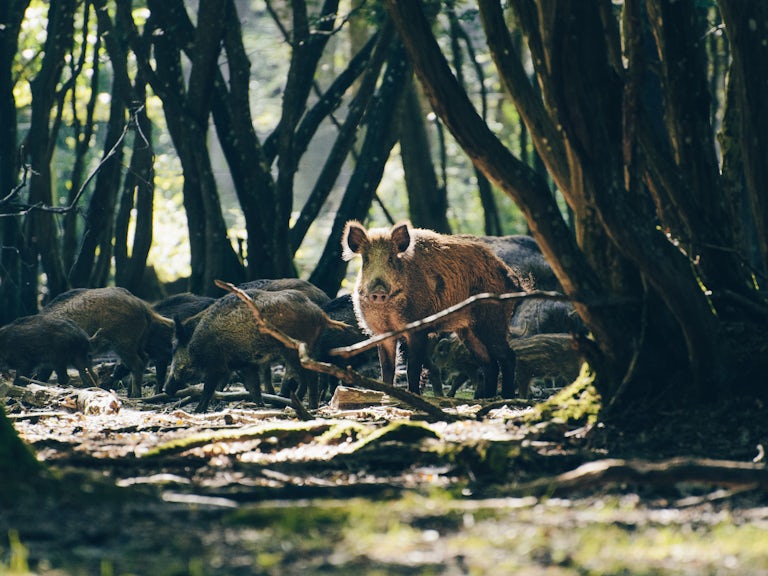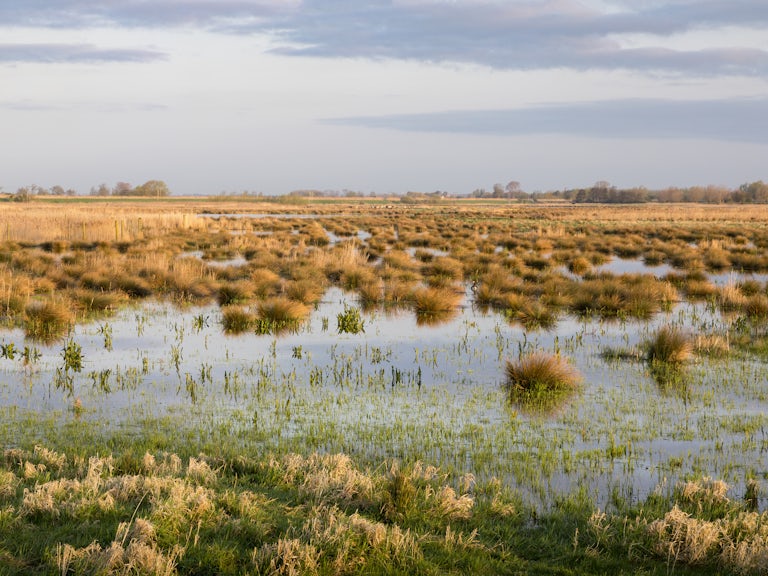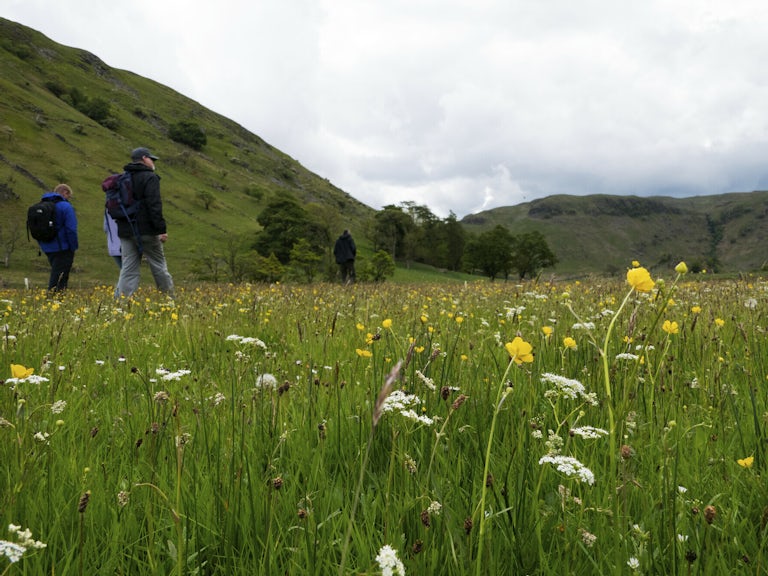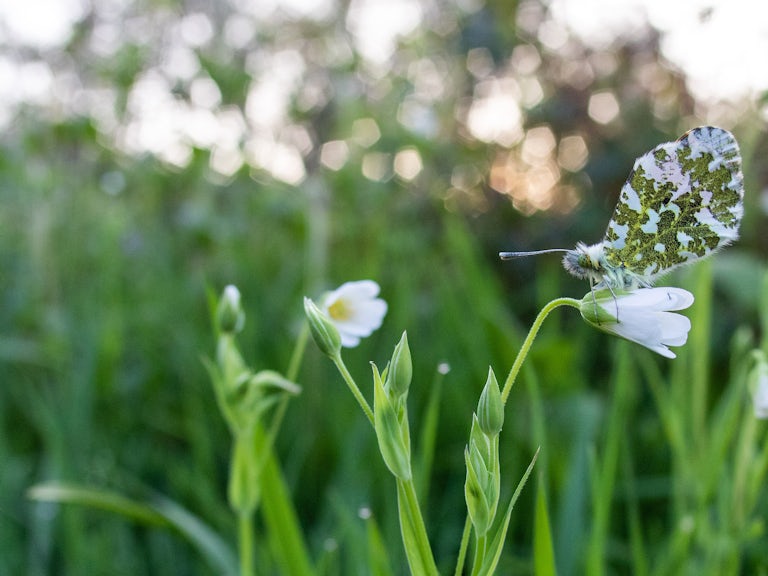Rewilding the uplands: what the history of Dartmoor can tell us
People have shaped, exploited and loved Dartmoor since ancient times. Historian Matthew Kelly explores the changing perspectives around these uplands and what they mean for rewilding.

Published 03/03/2016
Dartmoor [1] is often celebrated as ‘unspoilt’ or a ‘wilderness’. It is still possible to provoke a fierce reaction by observing that the denuding of Dartmoor’s woodland in pre-history made it the site of a man-made ecological catastrophe: the boggy upland we see today is as much a scene of ancient devastation as it is of natural beauty. For much of the medieval and early modern period, Dartmoor was dominated by grazing and tin mining, each shaping its landscapes and ecologies. As the tinners died out, Dartmoor came to be considered a ‘waste’, an affront to God’s generosity. In response, the agricultural improvers of the nineteenth century looked not to restore woodland and forest but to enclose and transform its great upland common into arable. Acidic soils and the huge problem of drainage ensured these experiments failed, leaving domesticated sheep, cattle and ponies largely ascendant.
In the 19 th and 20 centuries, granite quarrying and the china clay industry became the major source of Dartmoor’s geological wealth. Granite quarrying has now ceased, leaving parts of the upland distinctly post-industrial, but the china clay industry continues to thrive just outside the southern boundary of the National Park. Dartmoor also became host to a prison, a military training ground and several reservoirs. Forestry introduced non-native conifers to the moorscape and government incentives saw the clear-felling of much ancient woodland for replanting, also with conifers. Tourism added significant footfall to the mix.
‘Overgrazing’ – the damage done
Another development was the beginning of year-around grazing of Dartmoor’s commons by the hardy Scottish sheep and cattle breeds introduced in the last decades of the nineteenth century. This marked a radical break with the summer grazing regimes that predominated until this point. Grazing pressure grew further in the postwar period when agricultural subsidies incentivised increased stocking. Loud voices soon decried the damage done by ‘overgrazing’. Many were also concerned about animal welfare. Even the most hardened officials were shocked by the sight of under-nourished stock and the high mortality rate caused by ‘outwintering’ during the notorious winter of 1962 – 63.
Calls for outwintering to be banned, agricultural subsidies to be rethought and the commons to be made subject to closer regulation met with a very guarded response from government. The Ministry of Agriculture had no intention of disrupting Dartmoor agri-business by restoring traditional grazing regimes and it was ideologically wary of greater regulation. Eventually, however, the Dartmoor Commons Act of 1985 forbade any management technique ‘detrimental to the flora, fauna or geological or physiological features’ of any part of the common designated a Site of Special Scientific Interest, which by then was most of it. This left the commoners room for manoeuvre but it was thought that any intervention would be subject to delays and, in any case, the commoners were unlikely to overcome their seemingly congenital aversion to cooperate.
No one was yet talking much about biodiversity. This changed following the Rio Earth Summit in 1992 and the publication of the UK Biodiversity Action Plan in 1994, which was soon followed by plans tailored toward the individual ‘priorities’ of each National Park. Most emphasis has since been placed on the protection of 391 threatened species.
‘Scrubbing up’ well?
Thereafter, the common was grazed according to the agri-environmental agreements attached to agricultural subsidies. The consequences are increasingly evident. Although some areas remain overgrazed, fewer commoners than ever are now permitted to put stock out on the commons and destocking has led to significant ‘scrubbing up’, as fern and gorse growth is known on the moor. Visitors now encounter a more bosky moorscape. Active heathland restoration projects have made a difference, too.
For some commoners, these developments have been distressing. It can feel like Natural England is transforming the landscape into one where grazing will cease to be viable. [2] None of this has gone uncontested, and there has been some pushback, at least elsewhere. The Shepherds Life by James Rebanks, which recounts a year in the life of a Lake District sheep farmer, has shifted thousands of copies. In emotive and sentimental prose, the book emphasises the skills and discernment that can only be learned through hard work and respect for elders. [3] In what feels like coordinated action, a number of north-country sheep farmers, rebranded as shepherds, have taken to Twitter. Appealing photos of sheep and sheepdogs crop up on many a feed. Few would have predicted that sheep would achieve the charismatic affectivity once associated with whales or pandas. Dartmoor graziers have not been so quick to exploit the potential of social media.
From conflict to consensus
Advocates of rewilding are accused of not understanding the ways of the countryside but being happy to consume cheap meat; sheep farmers are charged with milking taxpayer-funded subsidies, paying animal welfare little heed and assuming they have a right to dictate how land should be used. [4] For decades, conflict over the British uplands has been conducted in this vein. And it isn’t very helpful.
Presently, rewilding relies on a combination of voluntary action and enthusiastic private landowners and it has some modest but significant successes to its name. It seems likely that the long-term success of the rewilding agenda will rely on gradualist measures facilitated by the state. As such, today’s sharp positioning and fervent debate needs to give way to compromise and consensus. There are signs that this is beginning to happen. In particular, the winter flooding has provided advocates of rewilding the opportunity to make their case on strongly pragmatic grounds. Only the most antediluvian could reject George Monbiot’s argument that we need to both create more ‘hydraulic roughness’ in the uplands and compensate affected farmers. At the same time, farmers are becoming increasingly frustrated by the EU’s requirement that they remove ‘ineligible permanent features’ — trees, shrubs, stones and ponds — if they are to receive their grants and subsidies. What might be termed ‘soft rewilding’ should see the farmers and the ecologists become more closely aligned.
The rewilding thought experiment has changed how I see and experience Dartmoor and other UK uplands. But so has my understanding of Dartmoor’s historicity. And this leads me to a crucial point. Historical understanding should not make us acquiescent in the face of change. Change occurs because human beings will it, often without a full understanding of the consequences. We must remain vigilant, ready to take responsibility, whether that means resisting harmful vested interests, however sentimentalised or ‘traditional’, or questioning our own unexamined commitments.
Grazing regimes established a century or so ago, rather than thousands of years ago as is sometimes claimed, are significantly responsible for the Dartmoor landscape of today; rewilding might help create the Dartmoor landscape of the future. If so, Dartmoor will remain hybrid, a place shaped by human and non-human nature and, as such, of continuing political contestation. If uplands like Dartmoor became wildlife reserves, funded partly through tourism, they will remain governmentalized spaces, just as they are today.
About the author
Matthew Kelly is Associate Professor of History in the University of Southampton. His Quartz and Feldspar. Dartmoor: A British Landscape in Modern Times was published by Jonathan Cape in 2015. He now working on a history of the environmental turn in recent British politics and culture. His twitter handle is @Scorhill
[1] Many of issues raised in this article are dealt with at greater length in Matthew Kelly, Quartz and Feldspar. Dartmoor: A British Landscape in Modern Times (London, 2015)
[2] See forthcoming essay by Tom Greeves ‘Dartmoor and the Displacement of Culture: Analysis and Remedy’ in Transactions of the Devonshire Association, 2016 (147), 1-44
[3] I discuss this at greater length here: http://quartzandfeldspar.com/2...
[4] For example, see http://www.theguardian.com/commentisfree/2015/jul/16/britain-wild-nature-rewilding-ecosystems-heal-lives & http://www.theguardian.com/com...^gdneco
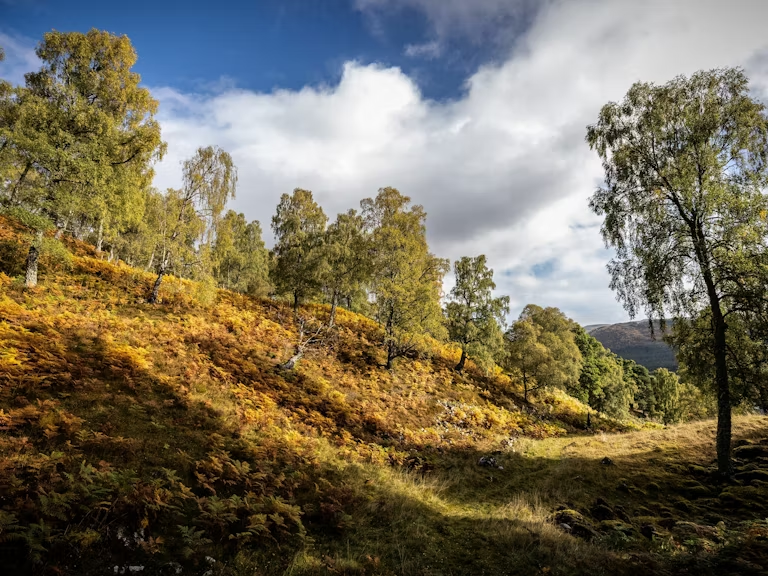
Rewilding 101
Start here to learn all about rewilding, what it looks like and what it can do.
Why rewild
Our vision
We have big ambitions. Find out what we’ve set out to achieve through rewilding.
What we do
Rewild your inbox
Wise up with the latest rewilding news, tips and events in our newsletter.
Sign up now